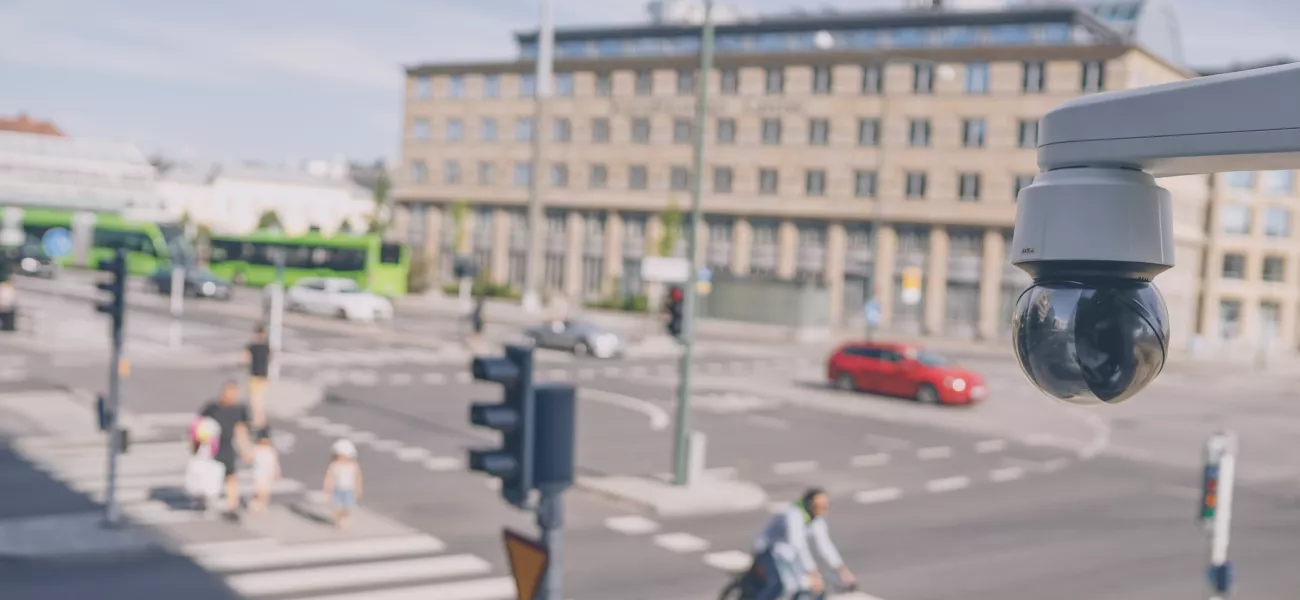
Although there was a brief exodus from cities over the last few years, evidence suggests that residents are returning to urban centers. In fact, it’s been predicted that by 2050 the current urban population will double in size. The convenience of city life has proven to be important, but city authorities need to work hard to meet new demanding expectations of a liveable city.
Mobility is a key part of this, as city-dwellers want to move comfortably and safely through the city in as little time as possible. It’s also important for you to note that the mobility options are changing. For example, the use bicycles have increased around the world, and e-scooters are becoming a common transport alternative to avoid traffic jams. Meeting these needs comes down to a high standard of city planning, as well as traffic and crowd management. Technology – in particular, surveillance systems – plays a critical role in supporting safety, efficiency and future planning. It will also support several sustainability objectives, for example metrics regarding air quality and sound pollution.
Ensuring the flow of residents and visitors is a top priority
One of the most important factors which contribute to a great city experience is the way that you move from point A to B in the city landscape – whether on foot, bicycle, e-scooter or vehicle. Sometimes it feels like a lottery-win when you catch the green-wave or when you find the perfect parking space on the first try. And when you experience the opposite and run late for a meeting or to pick up your kids, it effects your mood for the rest of the day.
Network video technology can be used in real-time to ensure that traffic flows freely around the city and minimizing congestion. Intersection management and traffic-light control is a critical part of this. Surveillance cameras equipped with intelligent software can be integrated with traffic lights to count and better understand the flow of pedestrian, cyclist, and vehicles across the intersection. The traffic statistics are used in real-time to operate and optimize the traffic controller at intersections for the most optimal and safe traffic light cycles.
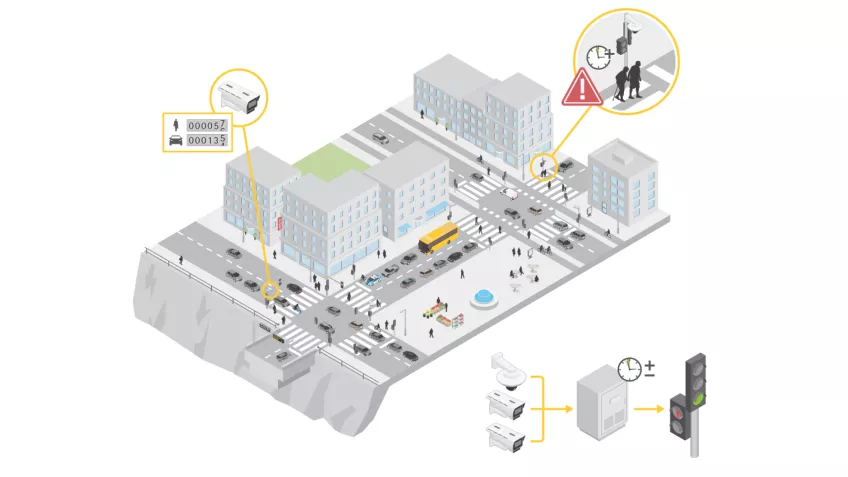
Another element which affects the smooth flow of traffic is effective parking management. Did you know that most congestion in a city is caused by drivers looking for available parking? Network camera solutions can be used to monitor free parking lots and provide information to navigation applications or digital signage to help drivers find parking spaces. Further efficiencies can be achieved within the parking areas by implementing automation. With license plate recognition, you can make access to parking spaces frictionless and payment automated, thereby also improving the driver’s experience and vehicle flow.
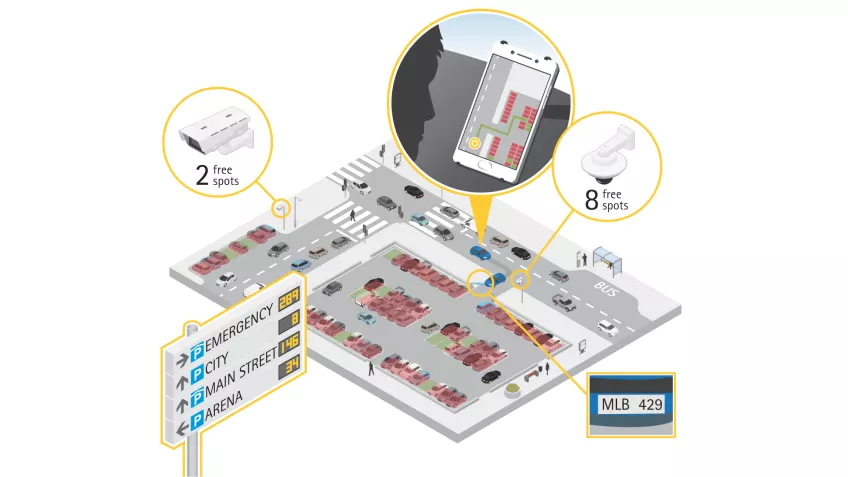
Ensuring safety in traffic is the new focus to keeping citizens save
With many people and vehicle in constant movement, areas like roads and crossings have become the most “dangerous” areas in the cities. Incidents can and will always occur despite your best intentions.
To minimize the effect and safety-risk of incidents, each second counts for traffic operators and emergency services to understand the situation and get the traffic moving again while securing safety and care for the people involved in the incident. Network camera solutions can be used as automatic incident detectors, identifying incidents in seconds to support operations with actionable real-time traffic data. High-quality video footage can be used for situational awareness and to take appropriate action. The video can also become evidence in forensic investigations to avoid future incidents.
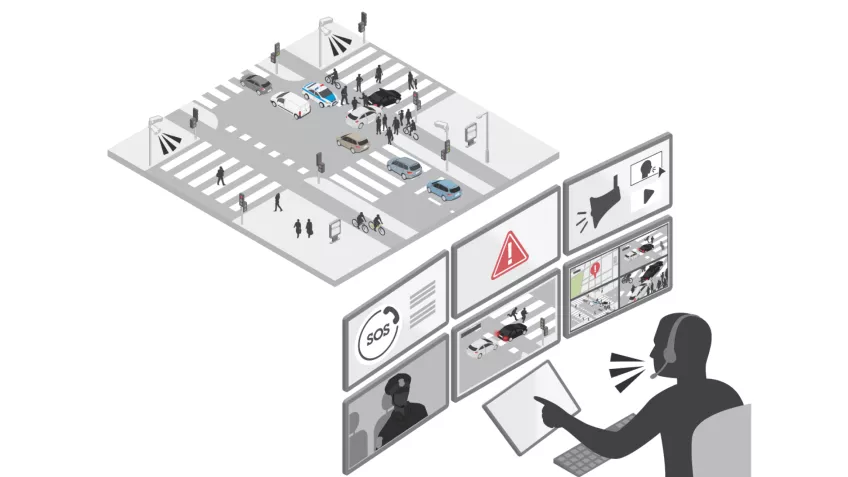
Each day the urban traffic is exposed to violations such as red-light violations, wrong-way driving, speeding, or incorrect parking. Even if many of the daily offences may seem small, they can be extremely dangerous. With limited resources and traffic everywhere, it can be challenging and time-consuming for you to prevent and act on these violations.
Network cameras together with analytics on the edge can detect a wide range of violations. Together with license plate recognition, the system can trigger fines or warnings automatically for more efficient safety measures.
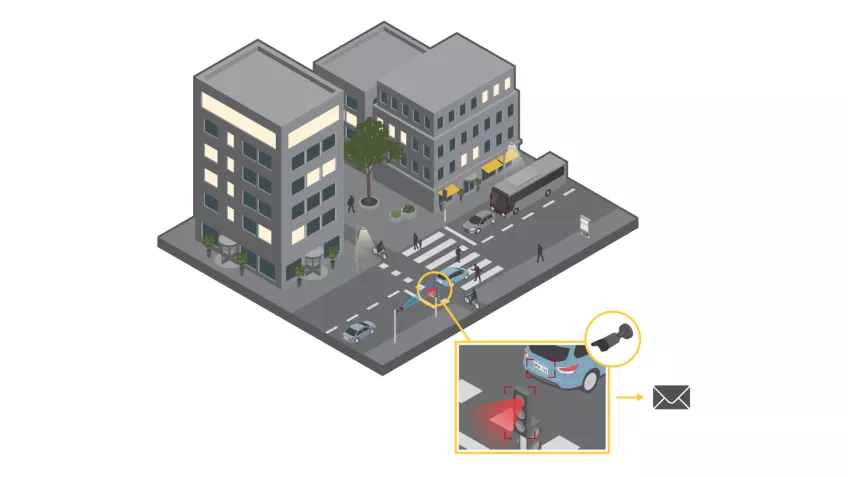
Planning for a changing future with reliable insights
As I mentioned in the introduction of this article, mobility behavior is in constant change. Fast-growing cities are creating challenges for city planners to meet new mobility trends and demands with problems such as increased travel time, air and sound pollution, and incidents. The traffic and mobility infrastructure has thus become a fundamental and complex problem for every municipality. When planning future infrastructure, it is critical to understand the current situation in order to improve and prioritize.
Network cameras with deep learning capabilities can be used as sensors to collect and process reliable data. The cameras with analytics on edge can classify and count people, vehicles and objects. They can also gather data about how people and cargo move through the city and to understand how traffic flows at different locations and times of the day.
These insights also help you recognize unsafe areas, such as places with a high rate of incidents or near-misses. Using this information, additional safety precautions can be introduced to improve safety. You can also use this data to inform advanced analytical models, such as digital twins where you can test the impact of different scenarios, for example, planned road works. Once you are armed with this information, you can effectively plan for changes which will improve safety, alleviate congestion and support the changing modes of transportation.
Technology which evolves with the city and supports goals
Cities will need to continue to undergo rapid change as urban populations grow, especially when it comes to transportation management. Mobility around the city is constantly evolving as residents and visitors not only navigate the cityscape but introduce new types of vehicles to improve their own modes of transport, enjoyment and environmental impact. You can only adapt to these changing needs if you’re equipped with reliable information and insights.
In addition, the urban growth means that you must prioritize overall sustainability goals and implement the type of infrastructure which supports this. For example, if your insights reveal and increasing number of electric vehicles then it makes the case for also investing in additional charging points. Using technology intelligently will allow you to keep up with the city population’s needs and effectively plan for future changes.
